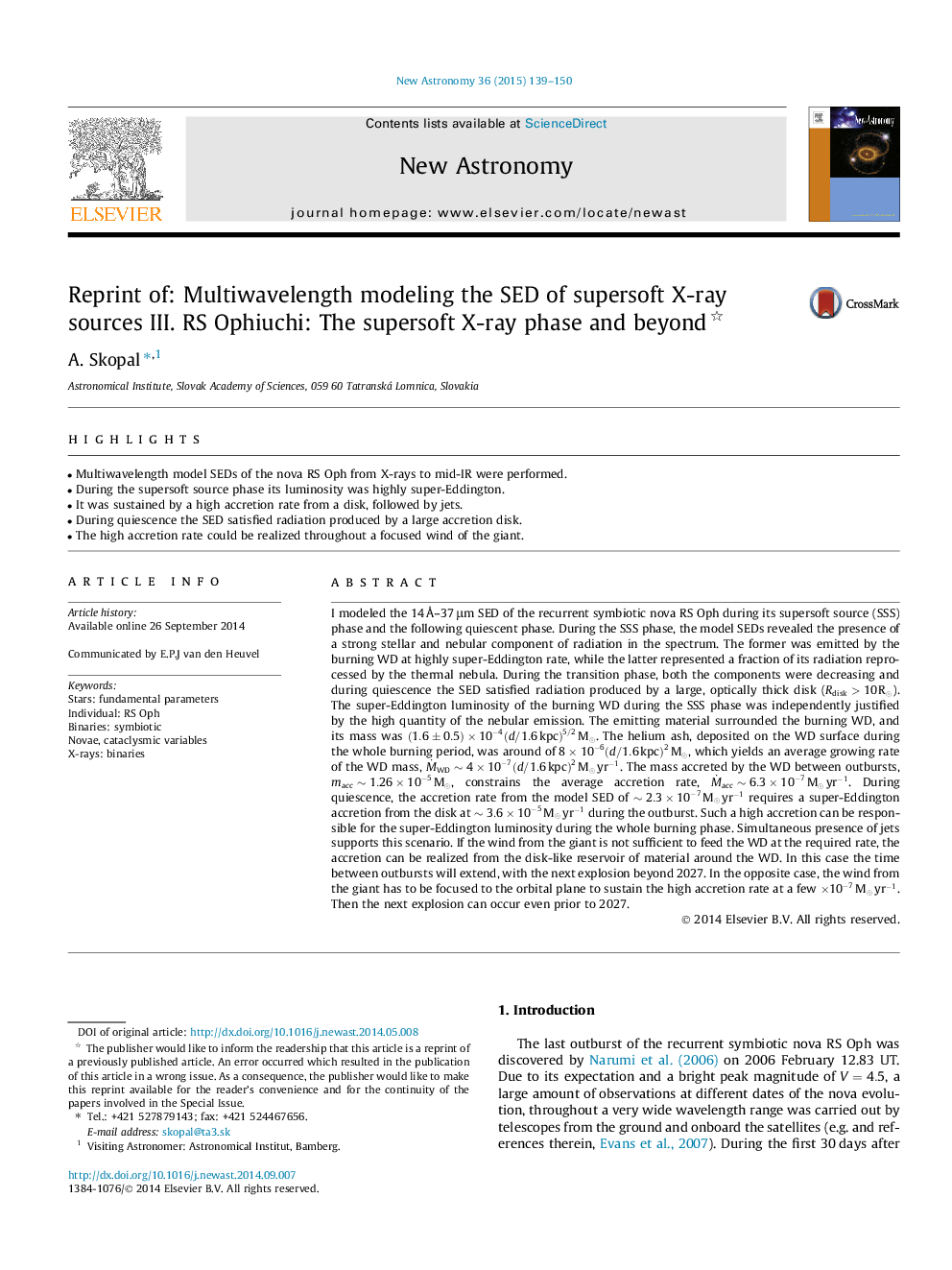| Article ID | Journal | Published Year | Pages | File Type |
|---|---|---|---|---|
| 1778890 | New Astronomy | 2015 | 12 Pages |
•Multiwavelength model SEDs of the nova RS Oph from X-rays to mid-IR were performed.•During the supersoft source phase its luminosity was highly super-Eddington.•It was sustained by a high accretion rate from a disk, followed by jets.•During quiescence the SED satisfied radiation produced by a large accretion disk.•The high accretion rate could be realized throughout a focused wind of the giant.
I modeled the 14 Å–37 μμm SED of the recurrent symbiotic nova RS Oph during its supersoft source (SSS) phase and the following quiescent phase. During the SSS phase, the model SEDs revealed the presence of a strong stellar and nebular component of radiation in the spectrum. The former was emitted by the burning WD at highly super-Eddington rate, while the latter represented a fraction of its radiation reprocessed by the thermal nebula. During the transition phase, both the components were decreasing and during quiescence the SED satisfied radiation produced by a large, optically thick disk (Rdisk>10Rdisk>10 R⊙R⊙). The super-Eddington luminosity of the burning WD during the SSS phase was independently justified by the high quantity of the nebular emission. The emitting material surrounded the burning WD, and its mass was (1.6±0.5)×10-4(d/1.6kpc)5/2 M⊙M⊙. The helium ash, deposited on the WD surface during the whole burning period, was around of 8×10-6(d/1.6kpc)2 M⊙M⊙, which yields an average growing rate of the WD mass, ṀWD∼4×10-7(d/1.6kpc)2 M⊙yr-1. The mass accreted by the WD between outbursts, macc∼1.26×10-5macc∼1.26×10-5 M⊙M⊙, constrains the average accretion rate, Ṁacc∼6.3×10-7 M⊙yr-1. During quiescence, the accretion rate from the model SED of ∼2.3×10-7∼2.3×10-7 M⊙yr-1 requires a super-Eddington accretion from the disk at ∼3.6×10-5∼3.6×10-5 M⊙yr-1 during the outburst. Such a high accretion can be responsible for the super-Eddington luminosity during the whole burning phase. Simultaneous presence of jets supports this scenario. If the wind from the giant is not sufficient to feed the WD at the required rate, the accretion can be realized from the disk-like reservoir of material around the WD. In this case the time between outbursts will extend, with the next explosion beyond 2027. In the opposite case, the wind from the giant has to be focused to the orbital plane to sustain the high accretion rate at a few ×10-7×10-7 M⊙yr-1. Then the next explosion can occur even prior to 2027.
